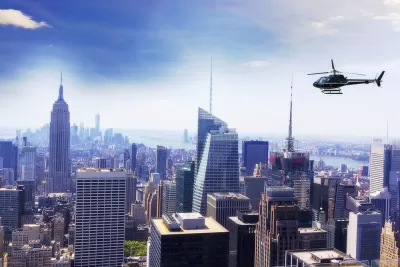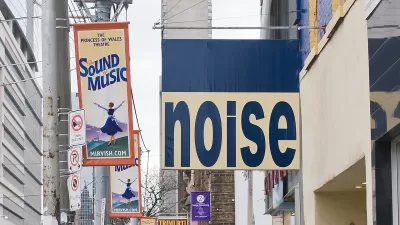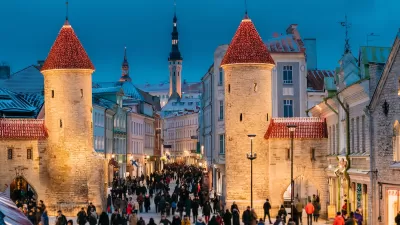Residents argue the city and state must do more to regulate the hundreds of flights that criss-cross the area on a daily basis.

Despite complaints from New York City residents about the noise from helicopters above the city, efforts to put legal limits on helicopter travel have failed at multiple levels.
According to an article by Kevin Duggan in Streetsblog NYC, “Helicopter noise complaints have surged from an average 84 per month in 2016 to 2,073 a month this year, according to an analysis of 311 data.”
The area’s helicopter flights are regulated by the Federal Aviation Administration (FAA), with different rules governing takeoffs from New York and New Jersey. “The city’s three heliports are all in Manhattan below 34th Street, and those facilities cap flights at a combined total of about 74,000 a year, or more than 200 every day.”
Research increasingly shows that noise pollution can have serious physical health effects, causing hearing loss and contributing to stress and heart disease. Critics such as Melissa Elstein, chair of the activist organization Stop the Chop NY/NJ, point out that some helicopters can also emit 43 times as much carbon dioxide per hour as a car.
Yet proposed state and federal legislation has failed to gain enough support, and industry advocates argue that their facilities bring an overall economic benefit. “City officials claimed it was not all about the money, and they were hesitant to further restrict tourism flights when pressed by Council politicians, fearing that would push more air traffic to take off from the other side of the Hudson.” This, they claim, would give New York even less power to regulate flight paths.
FULL STORY: Going in Circles: Laws to Tame Helicopters Struggle to Take Off

Planetizen Federal Action Tracker
A weekly monitor of how Trump’s orders and actions are impacting planners and planning in America.

Maui's Vacation Rental Debate Turns Ugly
Verbal attacks, misinformation campaigns and fistfights plague a high-stakes debate to convert thousands of vacation rentals into long-term housing.

San Francisco Suspends Traffic Calming Amidst Record Deaths
Citing “a challenging fiscal landscape,” the city will cease the program on the heels of 42 traffic deaths, including 24 pedestrians.

Amtrak Rolls Out New Orleans to Alabama “Mardi Gras” Train
The new service will operate morning and evening departures between Mobile and New Orleans.

The Subversive Car-Free Guide to Trump's Great American Road Trip
Car-free ways to access Chicagoland’s best tourist attractions.

San Antonio and Austin are Fusing Into one Massive Megaregion
The region spanning the two central Texas cities is growing fast, posing challenges for local infrastructure and water supplies.
Urban Design for Planners 1: Software Tools
This six-course series explores essential urban design concepts using open source software and equips planners with the tools they need to participate fully in the urban design process.
Planning for Universal Design
Learn the tools for implementing Universal Design in planning regulations.
Heyer Gruel & Associates PA
JM Goldson LLC
Custer County Colorado
City of Camden Redevelopment Agency
City of Astoria
Transportation Research & Education Center (TREC) at Portland State University
Jefferson Parish Government
Camden Redevelopment Agency
City of Claremont





























